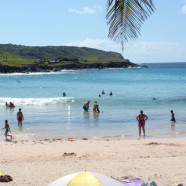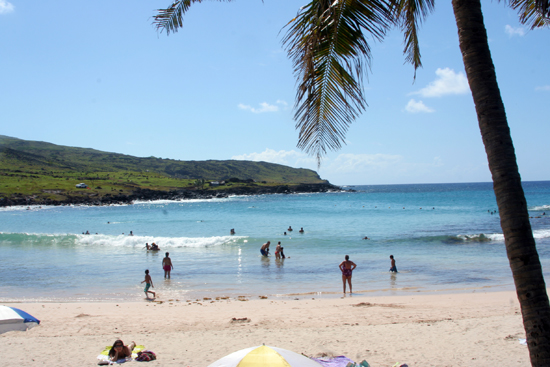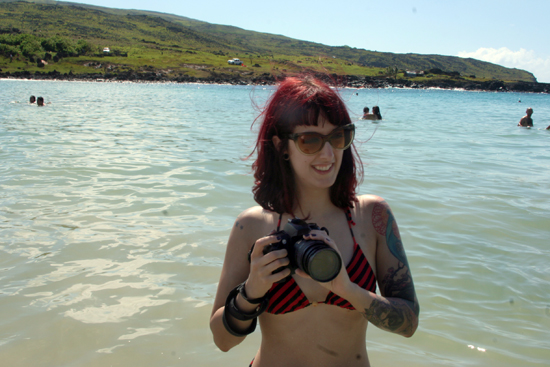
Pristine white sand, palm trees (imported from Tahiti in the 60s), turquoise Polynesian waters and stands where you can buy food, water and the most overpriced of the trinkets. This is Anakena, the part of the island that made me feel suddenly transported to pretty much any beach destination anywhere. For being the furthest location you can drive to from Hanga Roa on the island, it was probably the most populated place, and with reason – it’s the island’s only sandy beach – and people sure love sandy beaches.
A beach doesn’t really excite me, so you will have to excuse me for glossing over the beach part a bit. It is lovely, the water is warm, and there are sometimes lifeguards on duty.
The best part of wading off the crescent of land and into the water is looking to shore and imagining the people who have arrived at this very beach by boat. The first Polynesians arrived around 700CE, ready to settle with a collection of animals and plants. Then there was the Dutch sailors in 1722 who happened upon the tiny island while searching for what is now Australia, found a tiny land of generous people and stone giants. The waters of this bay were shadowed by slaving ships of the 1800s, that nearly stole an entire culture. So much change, hope, and devastation sailed through this little patch of water.
Unfortunately not visible from splashing around in the ocean, are a set of moai called Ahu Nau Nau; four of which have topknots (thought to represent the hairstyle of the time from when they were carved) which are a deep red colour, from an entirely different quarry than the bodies of the moai. The topknots came fro Puna Pau, which is just a little northeast of the main town.
Possibly the best preserved of the moai, these were protected by being buried in sand when they were toppled. Since they were not as exposed, details of the faces are much clearer than at other sites.
All in all a pretty spectacular way to submerge yourself far far out into the middle of the Pacific Ocean.







Recent Comments